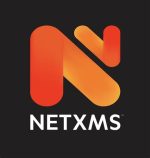SmartOS: Bare-Metal Hypervisor with ZFS, Zones, and Observability Built In
A production-ready operating system for running VMs and containers — born in the data center, not the cloud
What is SmartOS?
It’s a lightweight, live-booting hypervisor that combines the Solaris kernel with ZFS, KVM virtualization, and native container isolation via Zones. It’s built by the team behind Joyent and designed to manage virtual infrastructure at scale — especially where visibility, performance, and filesystem integrity matter.
It runs entirely from RAM. It doesn’t need a root disk. It’s stateless by design — but persistent when required.
It’s not a Linux distro. It’s not trying to be. And that’s the point.
There’s a rack of servers.
No cloud. No VMware. No Proxmox.
Just hardware and a desire to run workloads fast, clean, and with full control.
One boots SmartOS on each host.
Suddenly there’s ZFS, full observability (DTrace), native KVM, zones, and no configuration drift.
Every reboot is clean. Every deployment is versioned.
Where It’s Being Used
– Private cloud operators who need absolute control over guest environments.
– Large-scale deployments with strong per-host isolation requirements.
– SaaS platforms where storage efficiency and data integrity are critical.
– Engineering environments needing real-time tracing (via DTrace) and I/O observability.
– Replacement for aging Linux + LVM + KVM stacks with more cohesive tooling.
Key Characteristics
| Feature | Why It Matters |
| ZFS as Native FS | Built-in snapshots, clones, compression, dedup — no LVM needed |
| Live Boot Environment | Boots from USB/PXE into RAM — system is stateless until config loaded |
| Zones for Containers | Lightweight OS-level isolation — faster than Docker or LXC |
| KVM Support | Full virtual machines for Linux, Windows, BSD guests |
| Crossbow Networking | Virtual NICs, link aggregation, bandwidth limits — deeply tunable |
| Built-In DTrace | Kernel-level observability for troubleshooting, profiling, auditing |
| SMF Init System | Service management with dependencies, restarts, self-heal logic |
| Global Zone Separation | System runs from global zone; guests are strictly jailed |
| Image Management | Deploy guests via imgadm / VM metadata JSON — versioned and repeatable |
| No Local Root FS Required | Can run completely from RAM, pull config from remote sources |
What You Actually Need
– x86_64 server with VT-x/AMD-V and at least 8 GB RAM
– Local USB stick or PXE boot setup
– Admin workstation to push configuration (via Manta, API, or manual tools)
Download the latest SmartOS image:
https://smartos.org/download/
Write to USB:
dd if=smartos-latest.iso of=/dev/sdX bs=1M
Boot, drop to root shell, and start provisioning via vmadm, imgadm, and sysinfo.
Documentation: https://wiki.smartos.org
What Infrastructure Engineers Actually Say
“Boots in 15 seconds. Logs nothing we don’t want. Just works.”
“ZFS + KVM + DTrace in one OS — we finally stopped hacking those together.”
“Stateless by default means we version our infrastructure like code.”
One Thing to Keep in Mind
SmartOS expects comfort with UNIX — it doesn’t have a GUI, doesn’t follow systemd conventions, and doesn’t pretend to be Linux.
But for those who value control, transparency, and long-term stability — especially in VM-heavy environments — it’s a serious contender.







